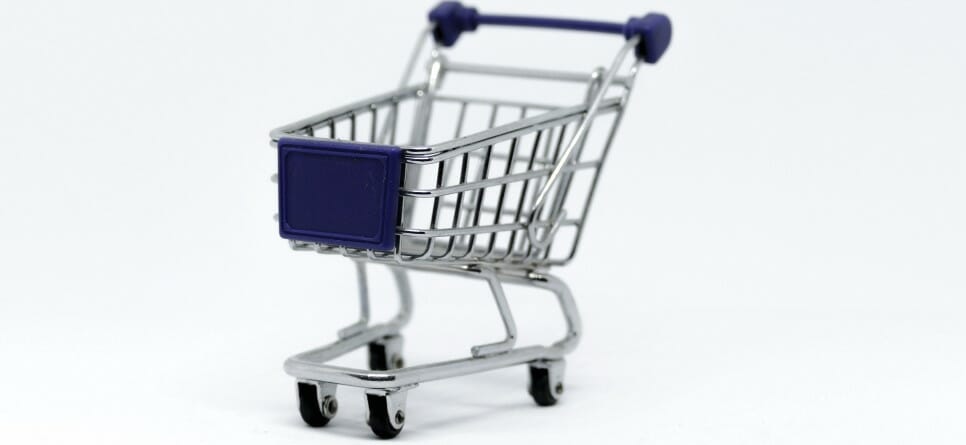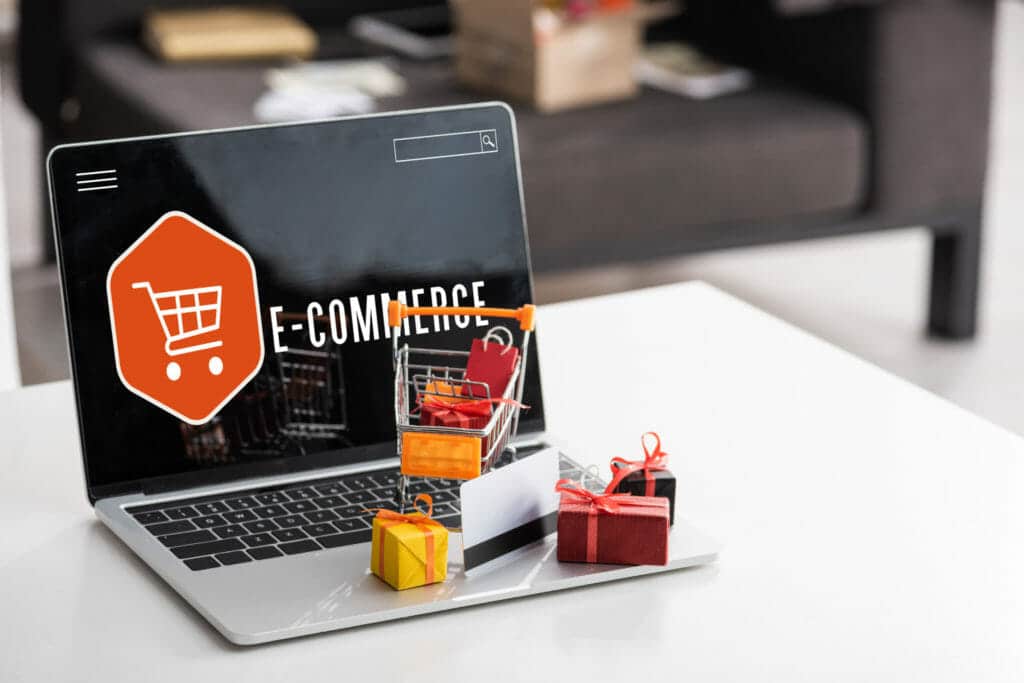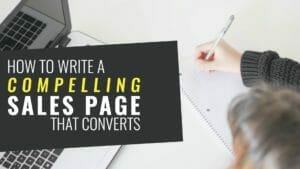Why talk about eCommerce conversion rate optimization for your online store? Well, if you want to make more money from your online store, you should be thinking of best ways to improve you conversion rate. You may be focusing more on getting lot of website traffic to your online store thinking that more visitors will equal more sales. This method of increasing sales has been used for years in both brick-and-mortar and online stores.
However, more traffic to your online store don’t necessarily mean more sales and profit. There is a much more effective way to increase your overall sales and revenue. What is that effective way to increase sales and revenue? Improve your conversion rate. This is the area this ecommerce conversion rate optimization guide is going to focus on.
Remember: Your conversion rate is the percentage of your visitors who purchase from you or respond to you CTA (Call to Action). For example, if you have 100 visitors and three of them buy from you, your conversion rate is 3%.
You can almost always improve the conversion rate on your website. This is good news because it means you can get more sales and revenue without needing to spend money to get more traffic. Improving your conversion rate is called Conversion Rate Optimization (CRO).
Let’s say that, using CRO, you’re able to increase your sales from three out of 100 visitors to six out of 100 visitors. By doubling your conversion rate, you double your revenue without increasing your spending at all.
CRO relies heavily on A/B testing. In a nutshell, A/B testing involves testing two variations of things against each other to see which produces more conversions. For example, you may try two different headlines on a page and see which generates more sales per 500 visitors.
The Ultimate Guide to eCommerce Conversion Rate Optimization for your Online Store
Table of Content
- Some important things to remember when doing A/B testing
- 13 eCommerce Conversion Rate Optimization Techniques
- Use Price Anchoring to Improve Conversion Rate
- Add High Quality Images
- Create Highly Detailed Product Descriptions
- Include Customer Reviews
- Make Checkout as Simple as Possible
- Provide Assurances to Customers
- Make it Very Easy to Contact You
- Draw Attention to Items that are on Sale
- Offer Multiple Payment Alternatives
- Create Abandoned Cart Email Sequences
- Create a Sense of Urgency
- Make it Really Easy to Find Products
- Optimize the Shopping Experience for Mobile Devices
- eCommerce Conversion Rate Optimization for Long-term Gains
- In Review…
Some important things to remember when doing A/B testing:
- Always test only one variable at a time. In order to measure the results properly, focus on testing one change.
- Ensure your tests reach statistical significance. Statistical significance simply means that enough events occurred (visitors, clicks, page views, sales) to ensure that the results are accurate and not some sort of fluke.
13 eCommerce Conversion Rate Optimization Techniques you can try on your Online Store
Now, let us discuss 13 conversion rate optimization tip you can start implementing to your online store to sky-rocket your online sales and revenue.
1. Use Price Anchoring to Improve Conversion Rate

The more someone feels like they’re getting a steal of a deal, the more likely they are to purchase from you. With price anchoring, you include both a higher price and your selling price next to all your products. It makes it appear that people are getting a good deal.
Consider using the suggested retail value of a product or how much you would charge for a consulting session. Say you’re selling a course for $199. It contains five hours of material and your hourly rate is $100. The course is valued at $500 and you can use that figure as your price anchor.
One thing to note about price anchoring: the difference between the price anchor and the actual price needs to be reasonable and not outlandish. People will see the difference and become suspicious if the difference is too great.
2. Add High-Quality Images

It’s important to remember that with online shopping, your customers can’t physically handle the products they’re looking at. If they can’t touch the products you sell, they want to use their other senses, like sight.
This is why it’s so critical to include numerous excellent images of your products on the product pages. Instead of just using a single hero shot, include 5-10 images of your products from various perspectives.
You may also want to include a video or two so that shoppers can get even more of a feel for your product. Even a simple demonstration of how the product works can go a long way in the minds of shoppers. When selecting photos and videos, ask yourself what you would want to see before purchasing.
3. Create Highly Detailed Product Descriptions

In addition to using numerous high-quality photos and videos, all of your product pages should contain in-depth product descriptions. These product descriptions help customers understand exactly what they’re getting.
Highlight the benefits of your product. Help shoppers understand just how much your product will help them. Paint a picture of the good life – of how your product will solve their problems.
Be clear on the features of the product. This includes things like the size and weight, color, number of pages (if a book), modules (if a course), how many parts are included, and more. If your product doesn’t include something that people would expect, be sure to highlight that as well.
The more informed your potential customers are, the fewer questions they’ll have and the more likely it is they’ll purchase from you.
4. Include Customer Reviews

If a product has a high number of positive customer reviews, you feel comfortable buying it. On the other hand, if a product has very few or poor reviews, you’ll probably look for something else.
Customer reviews are absolutely essential for your ecommerce store. The truth is that people have much more confidence in what others say about your products than what you say about them. If you don’t have customer reviews, you’re going to be at a disadvantage.
This implies that you need to get your existing customers to actually review your products. Probably the simplest way to do this is to create an automated email that goes out at a set time after a purchase is made (like two weeks after).
If the customer is happy, they’ll probably leave a review. If they’re not, you’ll have the opportunity to solve the problem and win back the customer. To generate more reviews, consider offering some sort of incentive. For example, if a customer leaves a review, you could give them 20% off of their next purchase.
5. Make Checkout as Simple as Possible

If shoppers must go through a complicated checkout process, your conversion rate will fall significantly. So, how do you simplify checkout? Consider implementing the following things.
- Allow shoppers to check out as guests. Don’t make people sign up for an account with you before they purchase items.
- Request the minimum amount of information. If you’re selling digital products and you don’t need a person’s physical address, don’t ask for it.
- Be sure every input field is clear. Some input fields, such as dates or phone numbers, require special formatting. Make it crystal clear exactly how the data should be entered by customers.
Be upfront with shipping costs. Few things turn customers off like getting to the checkout page and discovering that shipping is much higher than what they expected.
Always make it easy to get to the shopping cart. Customers should be able to view their shopping carts at any point in the shopping process.
6. Provide Assurances to Customers

For most people, shopping online is an exercise of trust. Unfortunately, every online shopper has had at least one bad experience. The more assurances you can give to shoppers, the more likely it is they’ll purchase from you. What sorts of assurances?
- First, make your return policy abundantly clear. Shoppers want to know that if they have a problem with the product, you’ll solve it for them.
- Second, assure your shoppers that their information is safe with you. The last thing anyone wants is to have their private information compromised by a hacker.
- Finally, answer as many commonly asked questions about products as possible. If customers regularly ask the same questions about a particular product, include answers to those questions on the product page.
7. Make it Very Easy to Contact You

Inevitably, your site visitors will have questions, concerns, and challenges. If you want to convert these visitors into paying customers who come back again and again, you need to make it very easy for them to get in touch with you.
The more ways customers can get in touch with you, the greater the chances of you being able to turn them into paying customers. Make your contact information obvious, clear, and easy to understand. Put a link to your contact page in your navigation menu as well as at the bottom of every page.
One important note: It does not matter how easy it is for customers to contact you if you do not resolve their issues in a timely manner. If you take ages to respond to inquiries and problems, you will not win new customers and you will lose your existing customers.
8. Draw Attention to Items that are on Sale

Price is a huge factor when it comes to shoppers making purchases. If you have certain items on sale, draw a lot of attention to those items. Highlight the sales on your homepage and across your various product pages.
There are different words you can use to highlight the discounts you’re offering:
- Free
- Marked down
- On sale
- Deep discounts
- % off
- Limited time
- Deal
One advantage to offering items on sale is that you can then cross-sell and upsell different products. Cross-selling is promoting related products, while upselling is promoting more expensive versions of the same product.
9. Offer Multiple Payment Alternatives

Your potential customers want to be able to use their payment method of choice. If you don’t offer someone’s preferred payment method, there’s a good chance they won’t purchase from you.
At a minimum, you should accept all the major credit cards: Discover, American Express, Visa, and Mastercard. It would also benefit you to accept other methods of payment like Apple Pay, PayPal, Google Pay, and Venmo.
Ultimately, this is about providing convenience for your customers. If you want to have a high conversion rate on your site, it’s important to offer your customers the convenience they desire.
10. Create Abandoned Cart Email Sequences

If you’re not trying to get customers to come back to their abandoned carts, you’re leaving a huge amount of money on the table. Instead of trying to find new customers, you can work to convert these customers. After all, they’re already familiar with you and the products you offer.
One of the best ways to recover abandoned carts is to send out a sequence of emails to the customer. These types of emails work well in abandoned cart sequences:
- Simple reminder of what they left in their cart
- Discount if they return and complete the purchase
- Support if they have any questions or challenges
- Time sensitive (cart will expire)
You can send out these emails over a series of days. It’s likely that when the customer sees these emails, they’ll be motivated to finish their purchase.
11. Create a Sense of Urgency

When customers feel a sense of urgency, they’re more likely to purchase from you. People have a distinct fear of missing out (FOMO).
So, how can you create urgency?
- Highlight limited stock. If you have a limited number of a particular product, bring that to the customer’s attention.
- Limited time offers. Creating a discount that expires at a predetermined time is another great way to increase the overall conversion rate.
- Limited selling window. If you limit when a person can purchase a product, it forces them to decide whether they really want to buy from you.
- Offer a bonus incentive. Give people who purchase right away something additional.
It’s important to note that the urgency you create must be real. If you tell people an offer is only available for a limited time, keep your word. If people see you still giving the same offer after the expiration date, they won’t trust anything you say.
12. Make it Really Easy to Find Products

Make it really easy to find products on your website, especially if you have a large number of them. They want to get where they’re going quickly and with minimum fuss. Use these strategies:
- Clearly separate products by category. Put the categories in your website navigation so that people can get where they want to be within a few clicks of the mouse.
- Implement search within your site. In the age of Google, people rely heavily on search to find the products they want. Also, look at the products people search for most and then put those on your home page or above the fold on your category pages.
- Allow people to filter products by various characteristics. For example, if you sell clothes, allow people to filter by size, color, and any other relevant attributes.
One easy way to tell if things are easy to find on your site is to ask real people, such as your friends or family members, to navigate through your site. Have them record their experience in real time using a screen recorder like Loom or Quicktime.
13. Optimize the Shopping Experience for Mobile Devices

There’s a big difference between ensuring your site works on a mobile device and optimizing the shopping experience itself. When the shopping experience is optimized, it’s easy and even pleasant to shop your store on a mobile device.
Evaluate the shopping experience with the following questions:
- Is all the text easy to read?
- Can shoppers quickly see all the details around a product or are they forced to scroll endlessly?
- Are the images clear and easily accessible?
- Are the call-to-action buttons (Place In Cart, Buy Now) obvious?
- Can the reviews and ratings easily be found?
- Are checkout fields kept to a minimum (nobody likes endless typing on a phone)?
If you want a great example of what a highly optimized shopping experience looks like, simply visit Amazon on your smartphone. The company has literally spent millions of dollars creating the ideal experience for shoppers.
eCommerce Conversion Rate Optimization for Long-term Gains

Conversion rate optimization certainly isn’t easy. But it’s definitely worth the work in the long run. As your revenue increases, you do have more to spend on marketing, and when you bring new visitors to your store, you convert them at a much higher rate.
In Review…
In this conversion rate optimization guide, we have discussed 13 ecommerce conversion rate optimization tips for your online store.
- Use Price Anchoring to Improve Conversion Rate
- Add high quality images
- Creating highly detailed product descriptions
- Including customer reviews
- Making checkout as simple as possible
- Providing assurances to customers
- Making it very easy to contact you
- Drawing attention to items that are on sale
- Offering multiple payment alternatives
- Creating abandoned cart email sequences
- Creating a sense of urgency
- Making it really easy to find products
- Optimizing the total shopping experience
Don’t feel overwhelmed at the thought of trying to implement all these different conversion rate optimization tips. It can be done. Therefore, don’t wait or delay to start optimizing your ecommerce website. Start now. You will see your conversion rate improving.
Happy optimizing!
Content Contributors Wanted!
Contribute to this website. We accept unique or repurposed articles.
Click here to learn more and submit your article.

















2 thoughts on “eCommerce Conversion Rate Optimization Ultimate Guide for Your Online Store”
Thank you for sharing such a detailed ecommerce optimization guide.
Glad it was helpful.
Comments are closed.